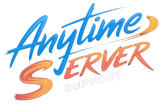Summary:
Remote work has transitioned from a temporary solution to a permanent part of how modern businesses operate. To remain competitive and productive, companies must invest in a smart, secure, and scalable tech stack. This post outlines the essential tools and technologies every business should consider for supporting a high-performing remote workforce in 2025.
1. Collaboration & Communication Tools
Effective communication is the backbone of remote work. Platforms like Microsoft Teams, Slack, and Zoom allow teams to chat, call, and collaborate in real-time, regardless of location.
For asynchronous collaboration, tools like Loom (video messaging) and Notion (team wikis & notes) offer efficient alternatives to endless meetings.
2. Project & Task Management
Clear task assignment and progress tracking are crucial in remote setups. Tools like Trello, Asana, ClickUp, and Monday.com help organize workflows, assign responsibilities, and monitor deadlines—all in one place.
These platforms ensure accountability and transparency across teams and projects.
3. File Sharing & Cloud Storage
Cloud-based storage platforms such as Google Drive, Dropbox Business, and Microsoft OneDrive make it easy to access, share, and collaborate on documents securely from anywhere.
Choose solutions with version control, permissions management, and seamless integration with your other apps.
4. Secure Remote Access & VPNs
Security is non-negotiable when employees access sensitive data remotely. VPNs (like NordLayer or Cisco AnyConnect) create encrypted tunnels, while Zero Trust Network Access (ZTNA) tools add extra protection by continuously verifying user identity and device health.
Secure access controls ensure data stays safe, even when accessed from personal or remote devices.
5. Device Management & Endpoint Security
Remote work means managing a wide variety of devices. MDM (Mobile Device Management) tools like Jamf, Microsoft Intune, or ManageEngine help enforce security policies and monitor device health.
Pair these with strong antivirus and EDR (Endpoint Detection & Response) tools like CrowdStrike, Bitdefender, or SentinelOne to protect against malware and intrusions.
6. Time Tracking & Productivity Tools
Tools like Toggl, Clockify, and Hubstaff help track time spent on tasks and projects. These are especially useful for teams billing by the hour or monitoring productivity.
For personal productivity, apps like RescueTime and Focus@Will can help employees manage their attention and avoid burnout.
7. Video Conferencing & Virtual Events
Beyond meetings, companies are hosting webinars, virtual town halls, and client demos. Platforms like Zoom, Google Meet, and Webex support high-quality video with breakout rooms, screen sharing, and recording options.
Consider pairing these with tools like Miro for whiteboarding and brainstorming remotely.
8. HR & Employee Engagement Platforms
Remote culture can thrive with the right support. Platforms like BambooHR, Deel, or Remote.com manage onboarding, payroll, and compliance across geographies. For engagement, tools like Officevibe, 15Five, and Donut help maintain morale and build connection.
These tools bridge the gap between virtual work and real team bonding.

Final Thoughts:
Remote work isn’t a challenge—it’s an opportunity to create more flexible, efficient, and resilient businesses. The right tech stack empowers your teams to collaborate seamlessly, stay secure, and deliver results no matter where they are.
At Anytime Server Support, we help businesses adopt and manage secure remote work solutions. Let us build a remote-friendly ecosystem that powers your productivity from anywhere.

